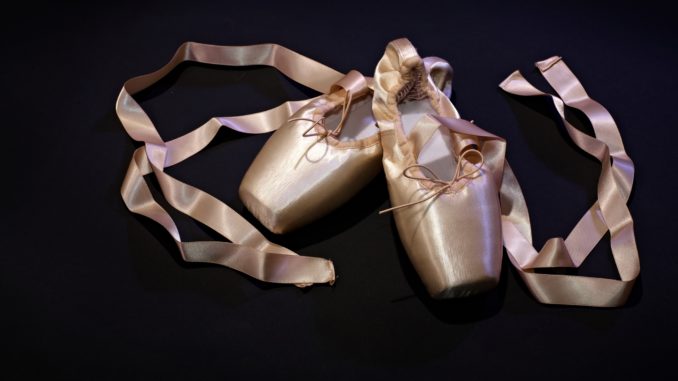
Why is it that there are so many references to sports in business, yet dancers get little to no credit? Despite learning similar lessons (or even harder ones) in the dance world as runners, footballers and other athletes; there is such a glamorization of sports around topics such as leadership and teamwork.
Growing up, I was never introduced to a sport I enjoyed or could be a less miserable player of. However, I was a ballerina, for as far as I can remember. I was so eager to join ballet that I made my mom ask for earlier admission, and I only stopped 12 years later as a semi-professional while starting university. Ballet was an intrinsic element of my education and shaped my character in so many ways, but we get little credit in the business world for it. I’m opening the curtains now to show you what happens behind the scenes – and how so much of those learnings from ballet form character and provide invaluable lessons to the business world, leadership and life:
- Resilience and endless pursuit of perfection
- Make it memorable. Communicate
- Being a role model to the youngest. Even if you don’t feel ready for it
- What to do when s**t happens? Keep dancing!
- Don’t try to outshine – dance with your group
- Learning how to deal with pain
- Enjoy your journey. It’s all for the passion
- You don’t control everything – and that’s okay.
Resilience and endless pursuit of perfection.
Ballerinas are in a never-ending pursuit of perfection, which helps kids develop a culture of constant self-improvement. Mastering ballet moves was about repetition, feedback, experimentation and discipline. Hours of training push you to the limit, but that’s the only way to master movements and a minor obstacle in the pleasant journey of dancing.
Make it memorable. Communicate.
You have to “take over the stage”, or how we say it in communications, “give them something they will remember”. Nobody remembers a well-rehearsed and mechanically repeated move. Dance is a way of communicating a feeling, which also means you need to be vulnerable to be able to pass on emotions to a faceless crowd.
Being a role model to the youngest. Even if you don’t feel ready for it.
I remember being a 10-year-old asked to “look after the youngest” before and after their dance. Although my mission there was just to make sure they behaved and showed up at stage on time, they’d ask me for advice, to show them moves they didn’t know yet and how I managed to craft them, and thongs they struggled with. People at all levels want to see what the future looks like, and if it is exciting up there.
What to do when S**t happens? Keep dancing.
Music may fail, your shoes may break, or your costume may fall apart. So is in life and in business. Things often go out of plan. In tech businesses we say it’s the difference between front-end and back-end – what your users don’t see. But the show must go on!
Don’t try to outshine – dance with your group.
Ballerinas are carefully ordered on queue by height, and the first person on any line is always the pace setter. Meaning that if they get it wrong, you follow it, because it looks better to do it wrong but together than right all by yourself.
Learning how to deal with pain.
Some of the best things we want to achieve in life involve getting through pain, be it physical or emotional. In ballet, we learn that pain is a temporary (but necessary) stage to achieving your end goals. We bleed in our shoes at times, we may have cramps on the show day, we have sore muscles from excess training. I remember teachers kicking our arms to check the strength of our posture. I remember casual stretching lessons where we sat on each other for additional stretch – you runners let me know when you grow balls to do it. And we get through it without a scream.
Enjoy your journey. It’s all for the passion.
Unlike the sports world, ballerinas do not usually get gorgeous paychecks. Not when you’re a beginner, and probably not ever. “So there’s a lot of sweat, a lot of sore muscles, sometimes blood, but no prize?”. Not really. I can only remember the notion of “making an effort to exercise” in my post ballet years. Back then, I was doing something I loved, something that always cheered me up whilst challenging me, so I never had to make a conscious effort and the smile on my face was natural. Because I loved every single minute of it. Don’t they say choose a job you love and you’ll never have to work a single day in your life?
You don’t control everything – and that’s okay.
After my ballet years, I joined Latin dances and learning how to dance with a partner was a whole new challenge. In most Latin dances, you respond to your partner’s moves, and you have no idea of what’s about to happen. So, you need to learn to let it go. After 12 years of joyful but scripted dancing, a lot of the skills I learned in ballet still applied and made me a fast learner, but I needed to learn new tricks, including learning how to lose control. In business, we are constantly talking about the need to upskill people, keep training executives, learning new leadership methodologies (which nowadays shifted from giving orders to empowering people). I guess we dancers already enjoy that flexibility from our training journeys.
In summary there is much to learn from dancing and the arts in business. It would be tempting to make a sweeping statement that as the business world has been so male dominated it follows that the terminology is filled with sports references. It’s probably more complicated than that – but it’s certainly worth thinking about when considering how you engage a diverse team or audience with your message and which references they carry out from their personal lives to the working life. The so famous leadership lessons from sports can – and are usually – learned also elsewhere, just depends on how perceptive the listener was, as well as eager to put it into practice.



